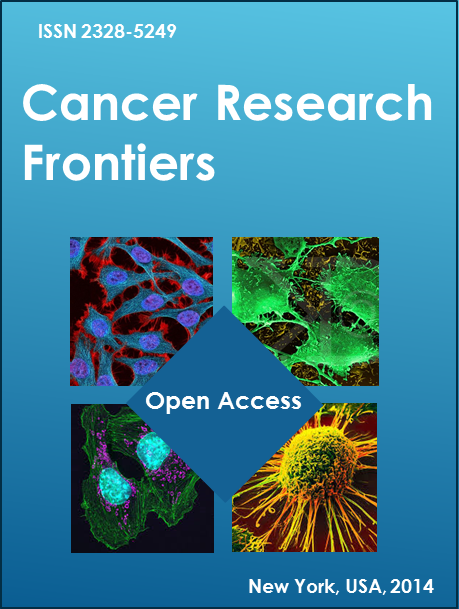Abstract _ Full Text (HTML) _ Full Text (PDF)
Review
Cancer Research Frontiers. 2015 Sep; 1(3): 225-236. doi: 10.17980/2015.225
Radiofrequency Ablation for the Local Treatment of Hepatocellular Carcinoma
Alvaro Martinez-Camachoa,b[*], Heather Laskeya, Blaze Cookb
a University of Colorado Denver, 12631 E. 17th Ave, MS B158, Aurora, CO 80045
b Denver Health Hospital and Authority, 660 Bannock St, MC 4000, Denver, CO 80204
[*]Corresponding author: Alvaro Martinez-Camacho, MD, Denver Health Hospital and Authority 660 Bannock St, MC 4000, Denver, CO 80204. Phone: 303-602-5032; Fax: 303-602-5055; Email:Citation: Alvaro Martinez-Camacho, et al. Radiofrequency Ablation for the Local Treatment of Hepatocellular Carcinoma. Cancer Research Frontiers. 2015 Sep; 1(3): 225-236. doi: 10.17980/2015.225
Copyright: @ 2015 Alvaro Martinez-Camacho, et al. This is an open-access article distributed under the terms of the Creative Commons Attribution License, which permits unrestricted use, distribution, and reproduction in any medium, provided the original author and source are credited.
Competing Interests: The authors declare that they have no competing interests.
Received April 8, 2015; Revised May 16, 2015; Accepted Jun 30, 2015.
Abstract:
Hepatocellular carcinoma (HCC) is the 3rd leading cause of cancer-related death worldwide, and the incidence of HCC is rising in the United States. Patients with cirrhosis of the liver and viral hepatitis are at the highest risk of developing HCC. Radiofrequency ablation has become an accepted first-line treatment for small HCC because of its similar outcomes when compared with surgical resection. However, local recurrence after radiofrequency ablation remains problematic and requires vigilant post-ablation surveillance imaging. Prior to radiofrequency ablation, the physician must take in to account tumor size and location as well as ability to obtain real-time imaging for a percutaneous approach, which is preferred. The procedure requires collaboration with an experienced interventional radiologist in order to obtain the best outcomes and minimize complications. Additionally, radiofrequency ablation can be used in combination with other treatment modalities, such as transarterial chemoembolization, to provide an adequate ablation bed for large tumors. Overall, the utilization of radiofrequency ablation should be part of the armamentarium of all physicians managing patients with HCC. This article reviews appropriate patient and tumor selection, advanced treatment techniques, complications, follow up, and post-treatment outcomes of radiofrequency ablation of HCC.
Keywords: Radiofrequency ablation, hepatocellular carcinoma, survival, recurrence, complication








